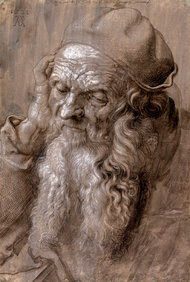2014 will mark the
500
th anniversary of the birth of anatomist
Andreas Vesalius.
Vesalius, for whom the
Vesalius Trust is named, was a
Renaissance physician famous for his pioneering treatise
De humani corporis fabrica (
On the Fabric of the Human Body) published
in 1543. Considered the father of modern anatomy Vesalius was just 29 years old
when his iconic work was published. The beautifully illustrated
De Fabrica transformed the field of
anatomy and how the human body was viewed and understood.
Portrait of Vesalius, the frontispiece from
De human corporis fabrica, 1543.
Since 1997 the
Vesalius Trust has been sponsoring educational travel opportunities. These “
Art and Anatomy” tours have transported attendees to exciting venues in Italy,
France, The Netherlands, Belgium, Scotland and England. Each tour has included
the
Association Européenne des Illustrateurs Médicaux et Scientifiques (AEIMS)
conference. These tours offer the opportunity to explore artistic and
anatomical points of interest with like-minded colleagues. Attendees have visited rare anatomy book
collections, anatomical theatres, medical museums and art collections, some
open to the public, but many exclusive.
To commemorate the upcoming
Vesalius birthday celebration I am working with a consortium of artistic, medical
and cultural organizations in Europe to build the next Art and Anatomy tour. These
organizations include Association Européenne des Illustrateurs Médicaux et
Scientifiques. This next tour will be to
Southern Greece from August 29-September 9, 2014.
Panorama view of Zante Town on the island of Zakynthos.
Andreas Vesalius was
born in
Flanders, present day Belgium, on December 31, 1514. He died on October 15, 1562 on the small
island of
Zakynthos, in the
Ionian Sea. After much research and discussion the
committee organizing the celebration chose Zakynthos as the venue for their
conference. Vesalius died when his ship
wrecked in the Ionian Sea and he ended up on island of Zakynthos. This island,
well aware of the importance of Vesalius, features many statues, monuments and
streets commemorating the famous physician.
Parthenon from the south, Athens.
The twelve-day Art
and Anatomy Tour, “Traversing Southern Greece”, will begin with arrival in the ancient
city of
Athens, a bustling metropolis and home to the Acropolis. The first day will comprise a walking tour of
Athens including visits to the
Hephaisteion, and the Doric temple of Thespian
one of the best-preserved temples from ancient Greece. The following day will be devoted to a guided
tour of the
Acropolis, including the
Parthenon, the
Temple of Athena Nike and
the
Porch of the Caryatids, which offer stunning views of Athens. The day will conclude with a tour of the Acropolis
Museum and free time to explore this fascinating city.
The next few days of
the tour will include travel to the sophisticated town of
Nafplion in the
Peloponnese.
This port city features polished old world streets lined with elegant Venetian
castles and neoclassical manors. Enroute to Nafplion we will visit the ancient city of
Corinth and its Greek and Roman ruins.
The beautiful port city of Nafplion
Prior to the
Vesalius Conference in Zakynthos the attendees will explore the ancient citadel
of
Mycenae and
Epidaurus and its early theatre designed by sculptor
Polykleitos, famous for his masterful sculptures of the human form.
The group will travel
to the beautiful island of Zakynthos via ferry, cruising the Ionian Sea as
Vesalius did in 1514. The group’s home
for the next four days will be the
Palatino Hotel, walking distance to the
conference site.
A few days will be devoted to the “Vesalius Continuum” commemorating the 500
th
anniversary of Andreas Vesalius’ birth. The
conference schedule includes lectures about Vesalius' work, life and influences
by famous medical scholars such as
Ruth Richardson, author of
Death, Dissection and the Destitute and
The Making of Gray's Anatomy, and Professor
Martin Kemp of
the History of Art at
University of Oxford. Kemp is
considered one of the world's leading authorities on Leonardo da Vinci and he has written extensively about
science and art. Facial reconstruction
artist
Richard Neave, famous for his reconstruction of the iceman, will also be
presenting.
After the conference the group will enjoy a special day of touring
the island of Zakynthos. Private boats
will take attendees to the breathtaking
Blue Caves, the uninhabited island of
Marathonisi and the charming village of
Volimes, known for it lace work and beautifully
woven wool rugs.
Island of Marathonisi, Zakythnos
The tour will end after a flight from Zakynthos to Athens with an independent
day to enjoy the city or do an excursion.
A farewell dinner, near the Acropolis, will end the exciting journey
before flights back to the US the next day.
For more information on this tour, including a detailed itinerary
and pricing please contact Marie Dauenheimer at
dauenheimer@erols.com or
571.216.1472.
Watch for future blog postings highlighting details about the tour and the Vesalius conference.














.jpg)

.jpg)






